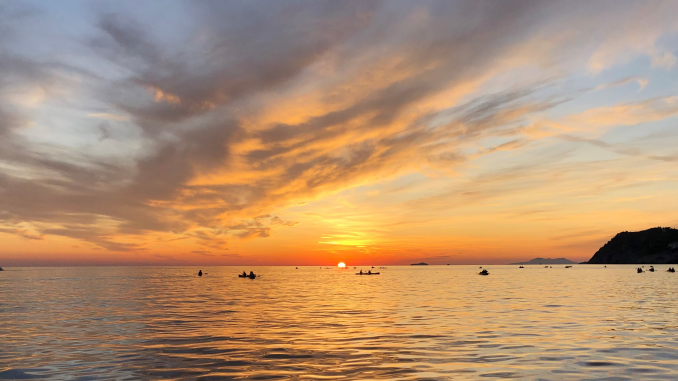
In this post, I’ll describe the highlights of my recently concluded trip to Europe. I’ll include a brief history of the places I visited, interesting experiences and travel tips. I wanted this post to be shorter than the one I wrote about my trip to Europe last year, however it still took me most of the Columbus day weekend to finish it. I find it rewarding to document memories while they are still fresh and relive the trip another time. Another benefit is that I am forced to organize the trip photos, most of which will otherwise not be seen again or even make it out of my phone :-).
I flew from DC to Helsinki, Finland where my brother and his family live on Sep 26th. I then traveled to Croatia on Sep 28th and visited Dubrovnik in Croatia, Mostar in Bosnia (Sep 30) and Kotor in Montenegro (Oct 1). On Oct 1, I flew to Vienna, Austria and spent one day (Oct 2) in Vienna. On Oct 3th, I flew to Barcelona, Spain to attend a Kizomba festival in Lloret del Mar, a sea side town about 75 Km north east from Barcelona. I flew back to Helsinki on Oct 6 for some more family time and then back to the States on Oct 10.
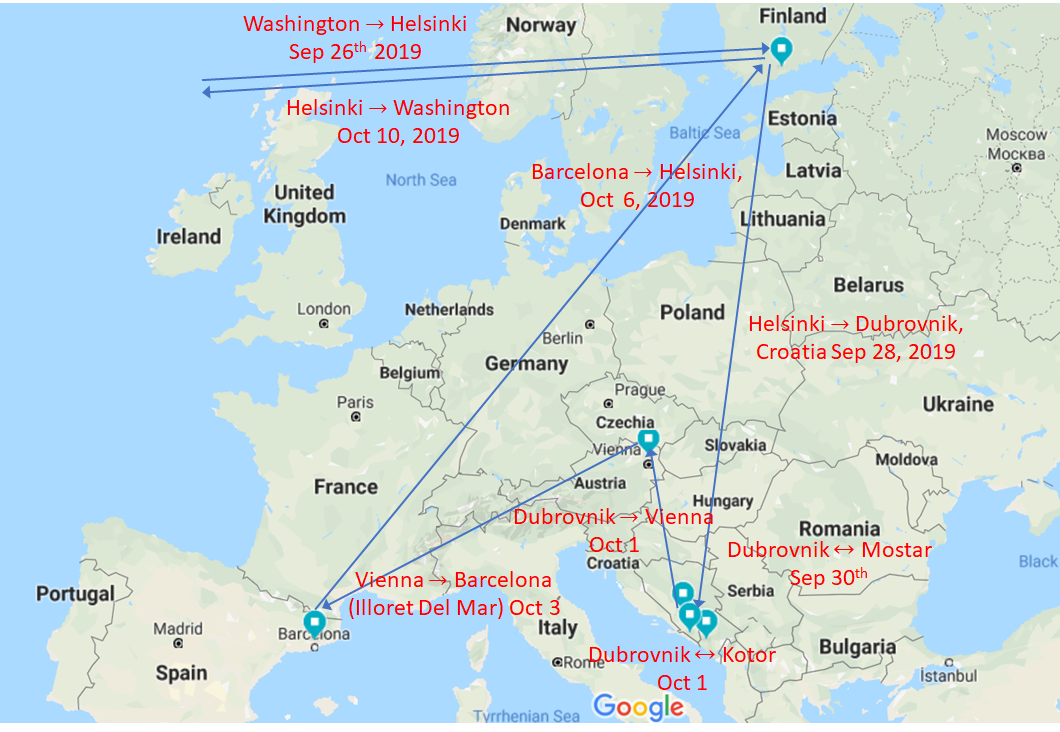
Below, I’ll describe the trip highlights in chronological order.
Dubrovnik, Croatia: Sep 28 – Oct 1
I had heard many good things about Croatia – the beautiful Adriatic coastline lined with numerous islands, great food, unique culture and relatively low costs. I’m happy to report that my experience in Croatia exceeded my expectations.
I flew an Air Serbia flight to Dubrovnik, Croatia, a major tourist destination on the Adriatic sea. The main attraction in Dubrovnik is the beautiful old town which is about a 35 minute bus ride from the airport. A one way bus ride from the airport to the old town gate costs 55 Kunas (~8.5$, 1 Kuna ~ 0.15 USD at the time of writing this article). Croatia is part of the European Union, but not the Euro zone and has its own currency called the “Kuna”. Croatia is also not a part of the schengen zone, however holders of dual or multiple entry schengen visas can visit Croatia without needing to obtain additional visas. Additionally, the days spent in Croatia do not count towards the number of days allowed on the schengen visa! See this for more details. U.S. citizens can travel to Croatia without visas, however this info may be relevant for citizens of countries that do need a visa to travel to Europe.
I stayed at an Airbnb apartment 5 min walk from the old town. I recommend staying close to the old town because most of the sights in Dubrovnik are located in and around the old town.
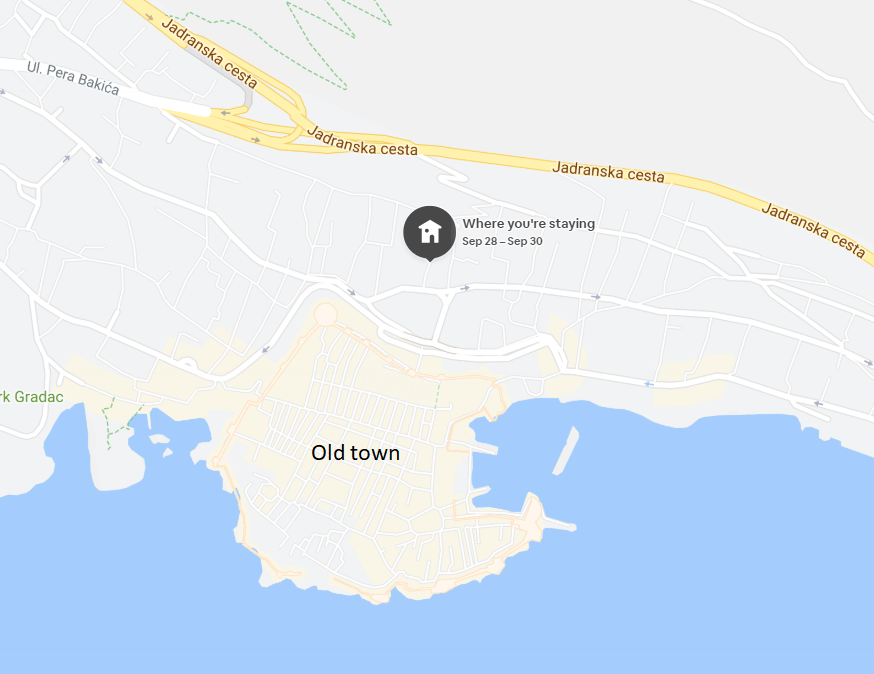
I had amazing views of the Adriatic sea, old town walls and Lokrum island from my apartment terrace!
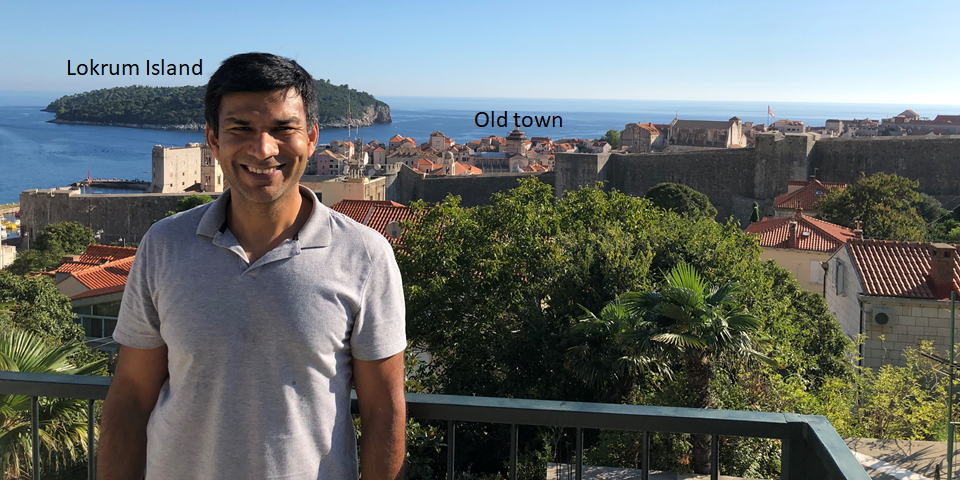
After settling in, I walked over to the old town and explored around for things to see and do. Since I had arrived around mid-afternoon, I didn’t have time for a full-day activity. I decided to do the old town wall tour which involves walking along the outer walls of the old town offering wonderful views of the old town interior and the hills and the blue waters of the Adriatic sea that surround it. The ticket was 200 Kunas (~$30), so a bit on the expensive side, but well worth it.
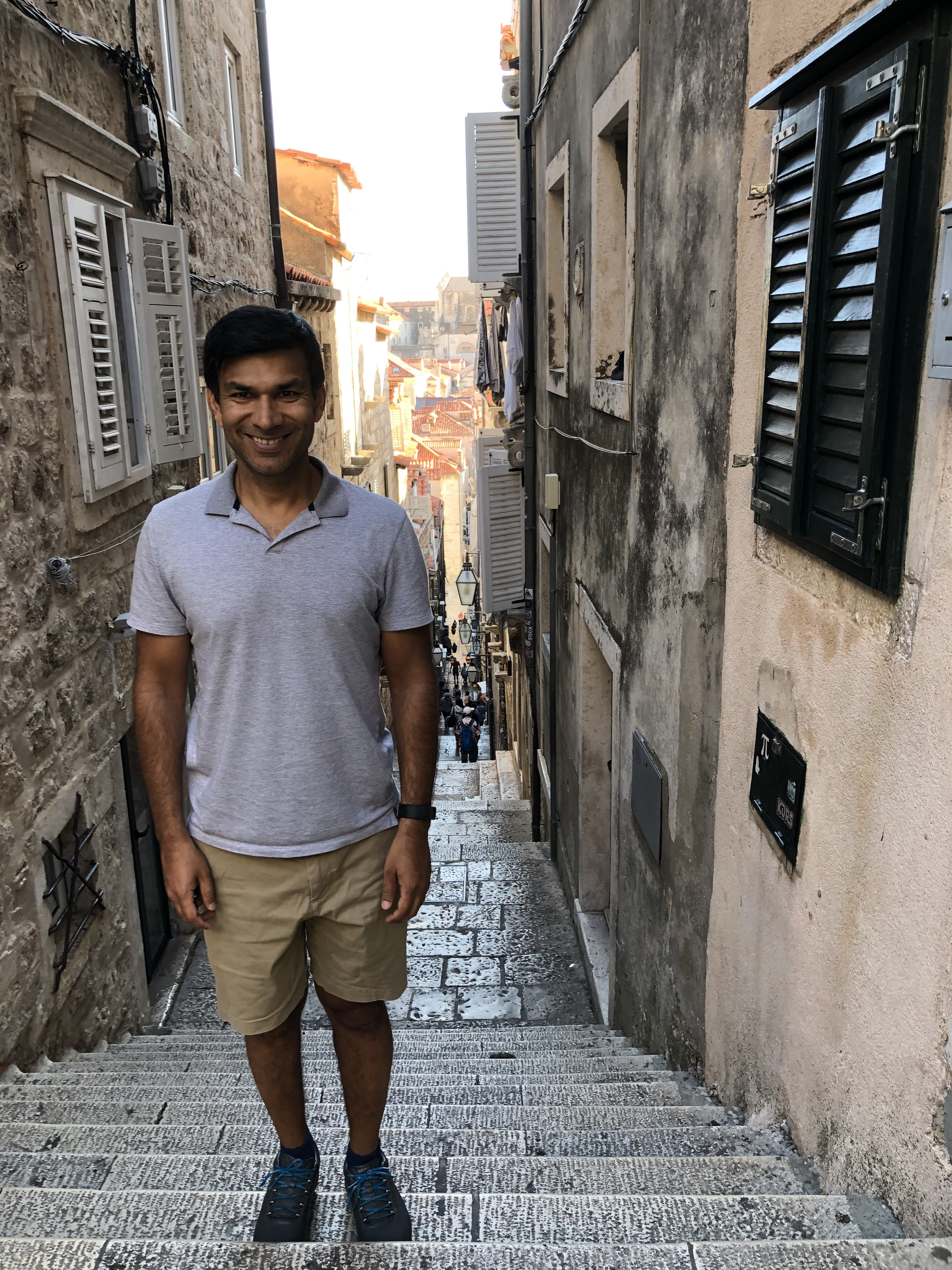
Pro-tip: The tourist center located right inside the old town walls offers a pass for 250 Kunas that covers the wall tour as well as entrance to the many museums in Dubrovnik. It is worth getting the pass because entry to each museum costs ~100 Kunas.
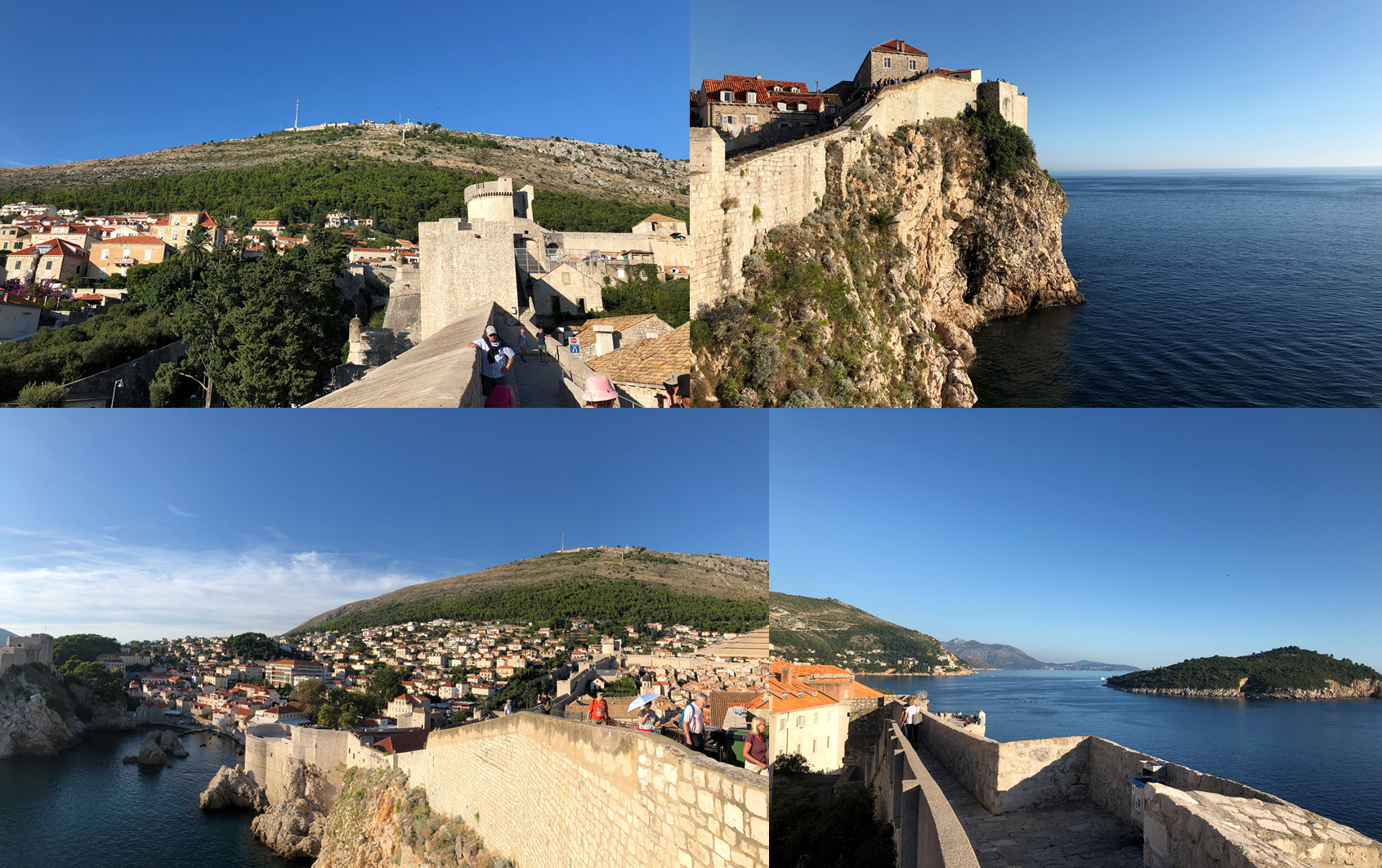
The wall tour took me about 2 hrs to finish. There are so many amazing picture opportunities that it was hard to resist stopping every 5 minutes to take pictures.
After the wall tour, I signed up for the sunset boat tour of the water around old town. The tour follows the coastline to the south of old town where there are many modern hotels and beaches, both private and public. It then goes around Lokrum island before heading back to the old town harbor. Lokrum island has many nice walking trails, but no overnight accommodation. The highlight of the boat tour was definitely the spectacular sunset.
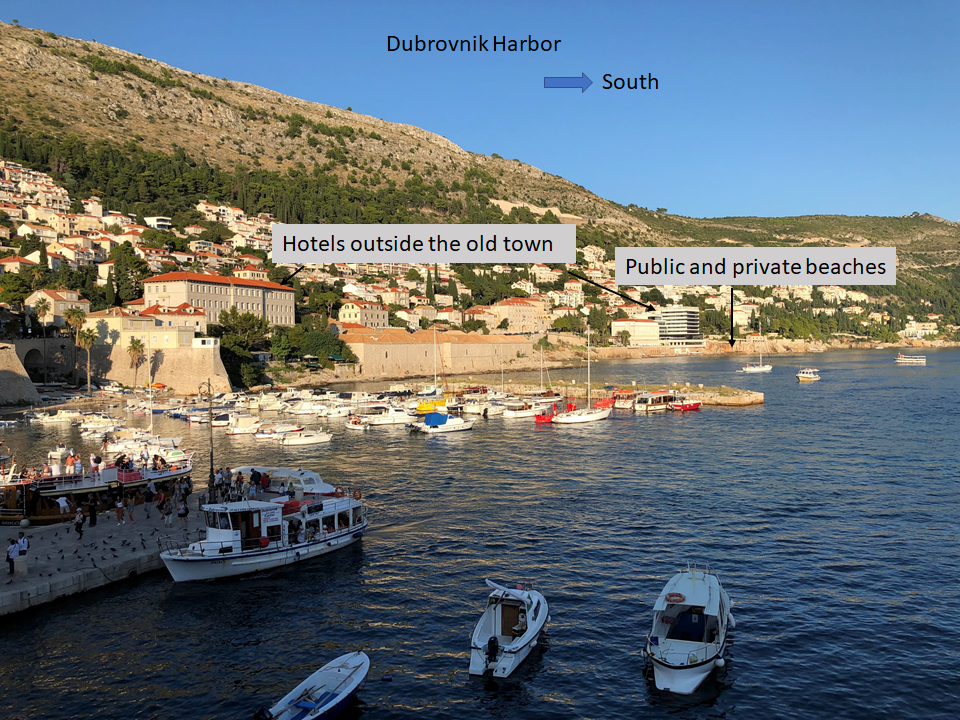
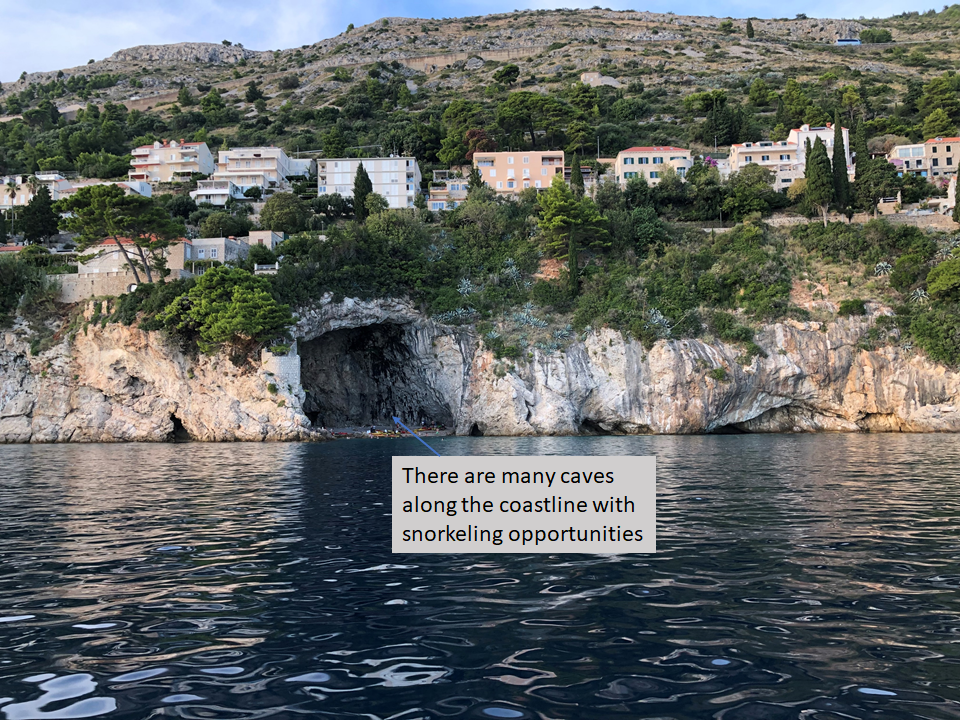
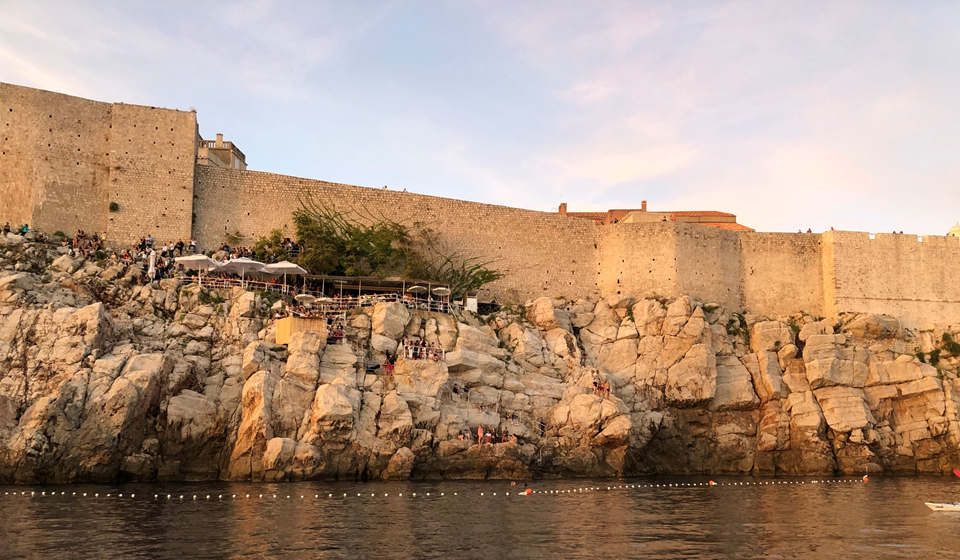
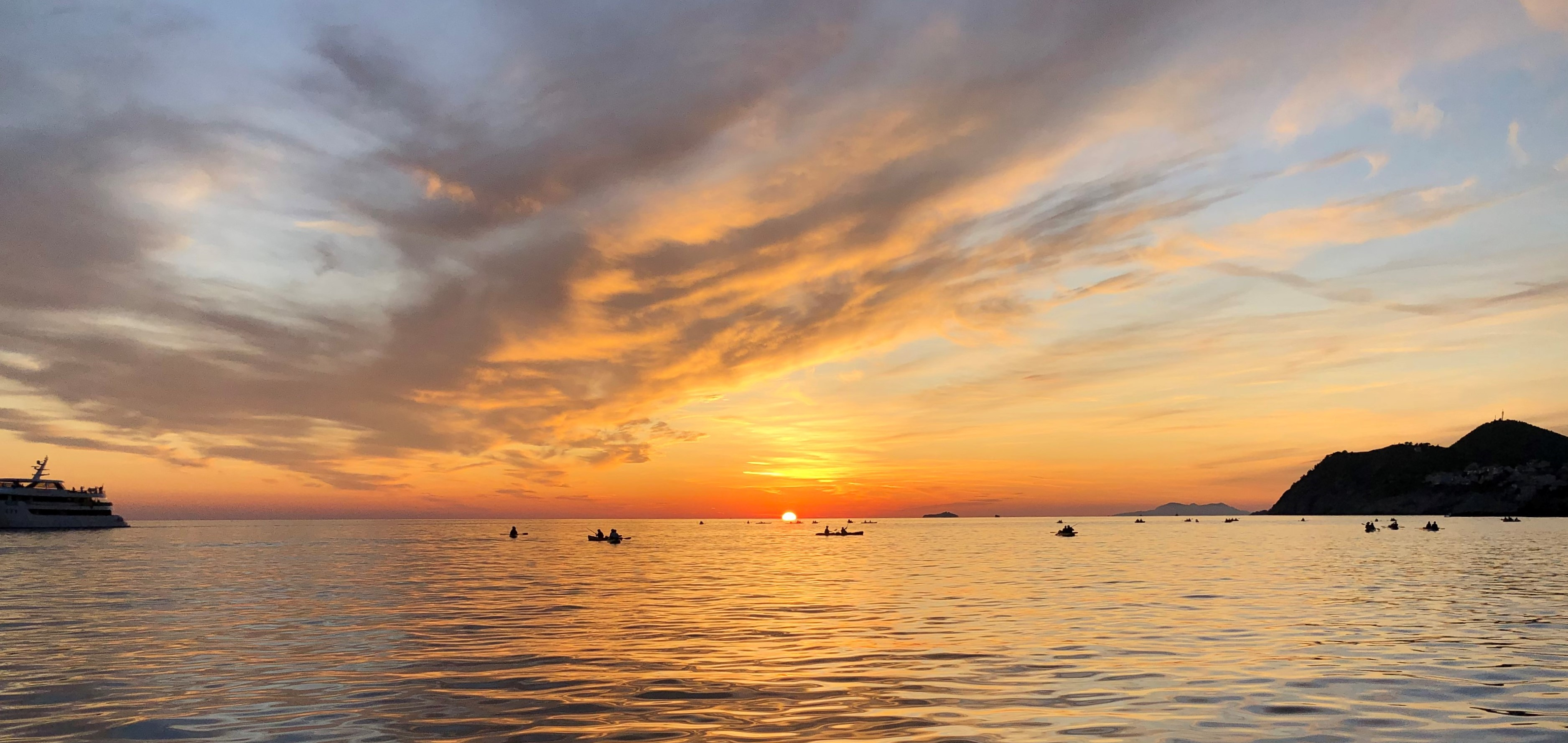
After the boat tour, I got dinner at a restaurant inside old town. Old town is teeming with restaurants offering similar (mostly Mediterranean) food. I found the food to be good but a bit on the expensive side. Dubrovnik is a very charming, but expensive destination!
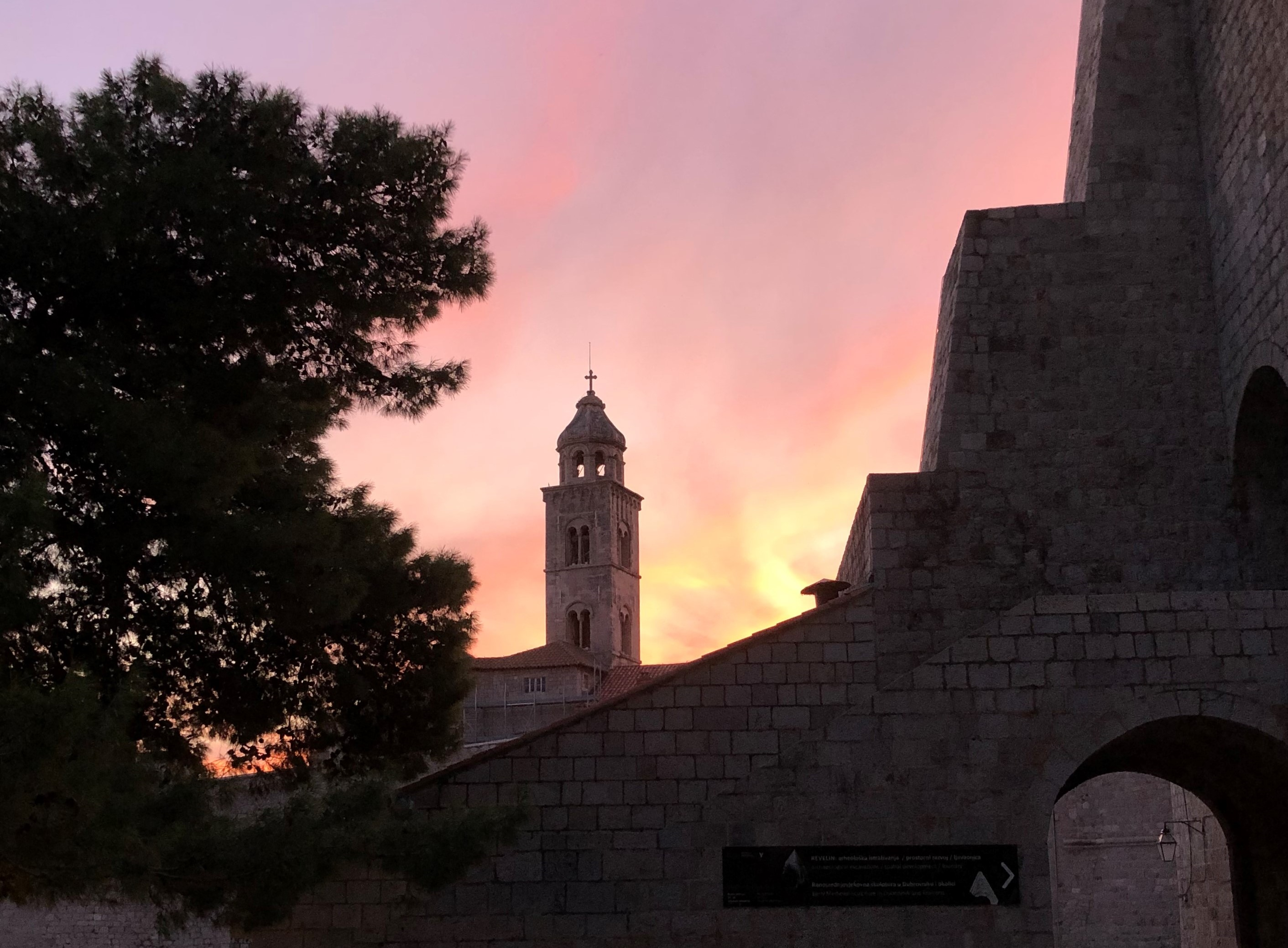
The next morning (Sep 29), I got up late and got a big breakfast and ambled over to old town. During my boat tour the previous evening, I had noticed several kayak tours near the caves and around Lokrum island. I stopped by a tour operator in old town and signed up for an evening kayak tour and a day trip to Mostar, a popular tourist destination in Bosnia leaving early morning of the next day (Sep 30). The trip to Mostar also included a stop at the Kravice waterfalls. The kayak tour was ~$30 and the trip to Mostar around $50. I don’t recall the exact cost of the tours.
Since I had a few hours to kill before the sunset kayak tour, I decided to visit some of the museums in old town. Also, at this point it is time for a brief history of Dubrovnik (sorry, but you knew it was coming..)
Brief history of Dubrovnik
The history of Dubrovnik and the Balkans in general is very complex. Here’s a short version: in the 13 and 14th century, the kingdom of Dubrovnik (which includes the city of Dubrovnik and a large part of the Adriatic coast) was under the sovereignty of Venice (now part of Italy, but an independent state before Italian unification in the 19th century). Following the treaty of Zardar between the kingdom of Venice and the kingdom of Hungary-Croatia in 1358, it became a vassal state of the Hungarian-Croatian republic and from the mid 15th to the early 19th century, it accepted the authority of the Ottoman empire (by paying an yearly tribute). For most of this period, the kingdom adopted the policy of accepting the sovereignty of the major power that controlled the region and paying tribute while maintaining substantial autonomy over trade, domestic law and local institutions. Dubrovnik experienced its golden period in the 15th and 16th century with extensive trading ties with other kingdoms around the Adriatic, a relatively enlightened legal and political system and even its own water supply system. In 1667, Dubrovnik was hit by a devastating earthquake from which it never fully recovered.
The republic of Dubrovnik was abolished in 1806 when Dubrovnik was occupied by French forces under Napoleon Bonaparte and became part of the newly created French Illyrian provinces. After the defeat of Napoleon, the kingdom of Dubrovnik was annexed by the Austrian empire (against the wishes of the Dubrovnik local government who wanted the kingdom of Dubrovnik to be reestablished after the defeat of Napoleon, but were denied representation at the council of Vienna). Following the dissolution of Austria-Hungary after the first world war, Dubrovnik became part of the new kingdom of Yugoslavia (later renamed to the Socialist Federal Republic of Yugoslavia). In 1991, following the collapse of the Soviet Union, the four components of Yugoslavia – Croatia, Slovenia, Serbia and Bosnia-Herzegovina declared independence. Dubrovnik was shelled by Serbia during the Balkan wars that followed. There are several plaques in old town Dubrovnik informing visitors of this shelling and the locations where it occurred.
I spent a few hours at the Rector’s palace, where an exhibition to mark the 600th anniversary of erecting the Orlando column was being organized. The Orlando Column was erected in 1419 to signify that the city of Dubrovnik was under the protection of King Sigismund of Luxemburg, the Holy Roman Emperor. At the time it was common for the distant cities of the Hanseatic League (an organization of north German towns and merchant communities) to erect similar stone statues symbolizing the alliance and protection of the holy Roman emperor.
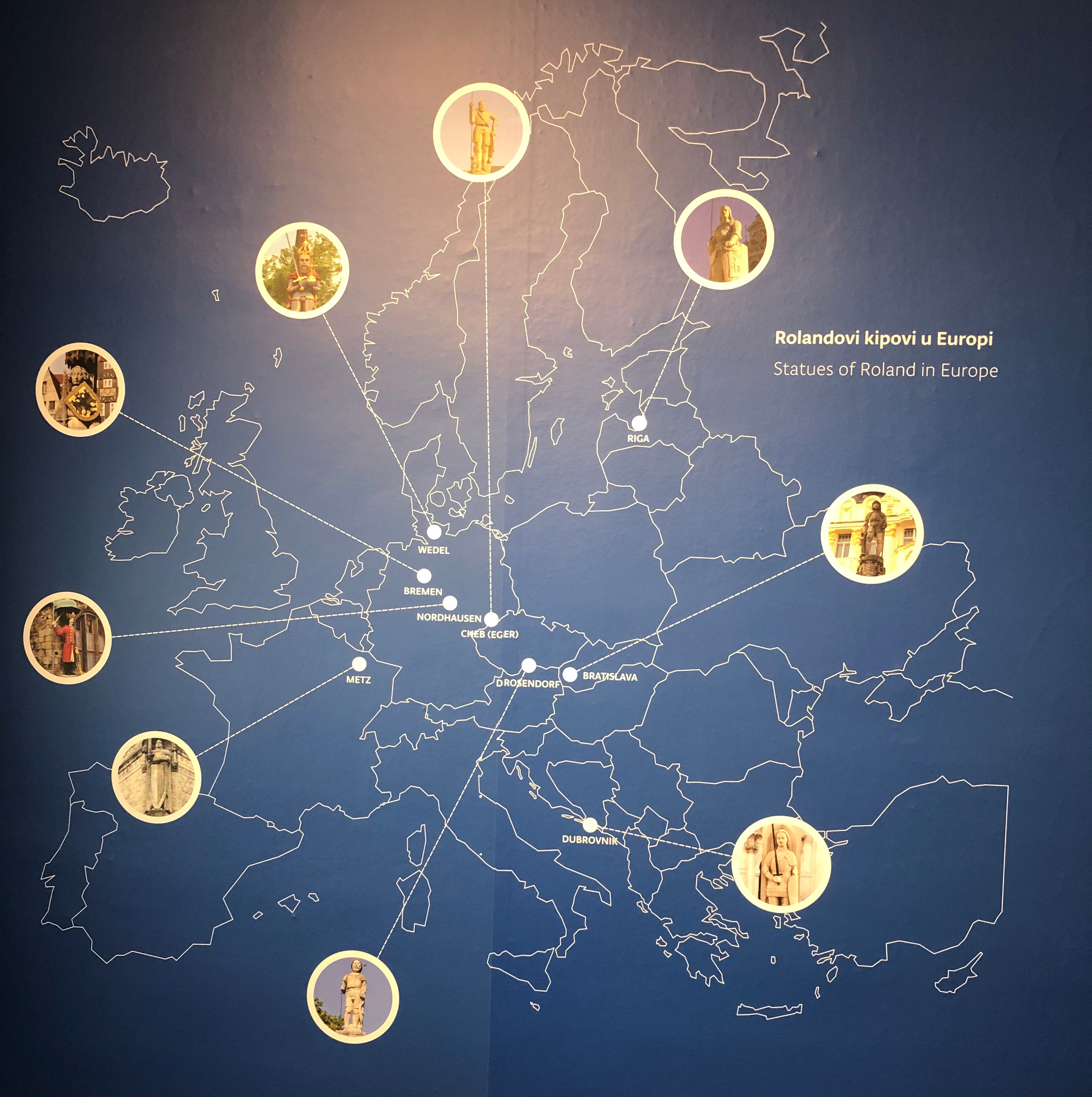
This column has been an important landmark in Dubrovnik for many centuries serving as a base for issuing public proclamations, carrying out public punishments and even as a standard for making measurements (a line at the base of the tower marks the standard Dubrovnik “lakat” = 51.2 cm).
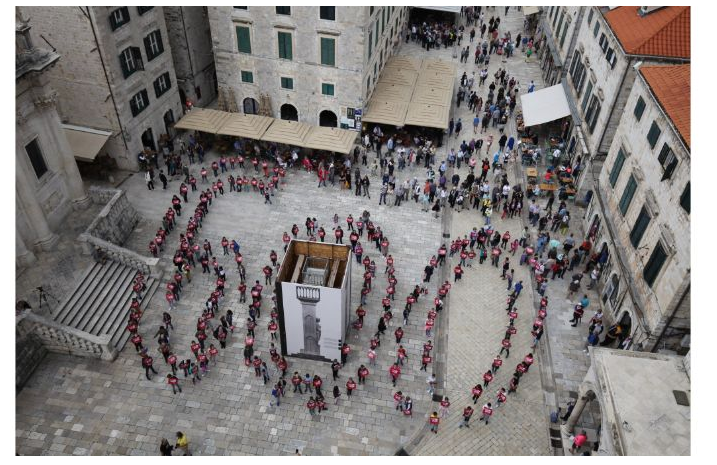
I spent a few hours at the exhibition and learnt many interesting facts about Dubrovnik such as that the republic of Dubrovnik had an advanced metallurgy industry and minted their own coins.
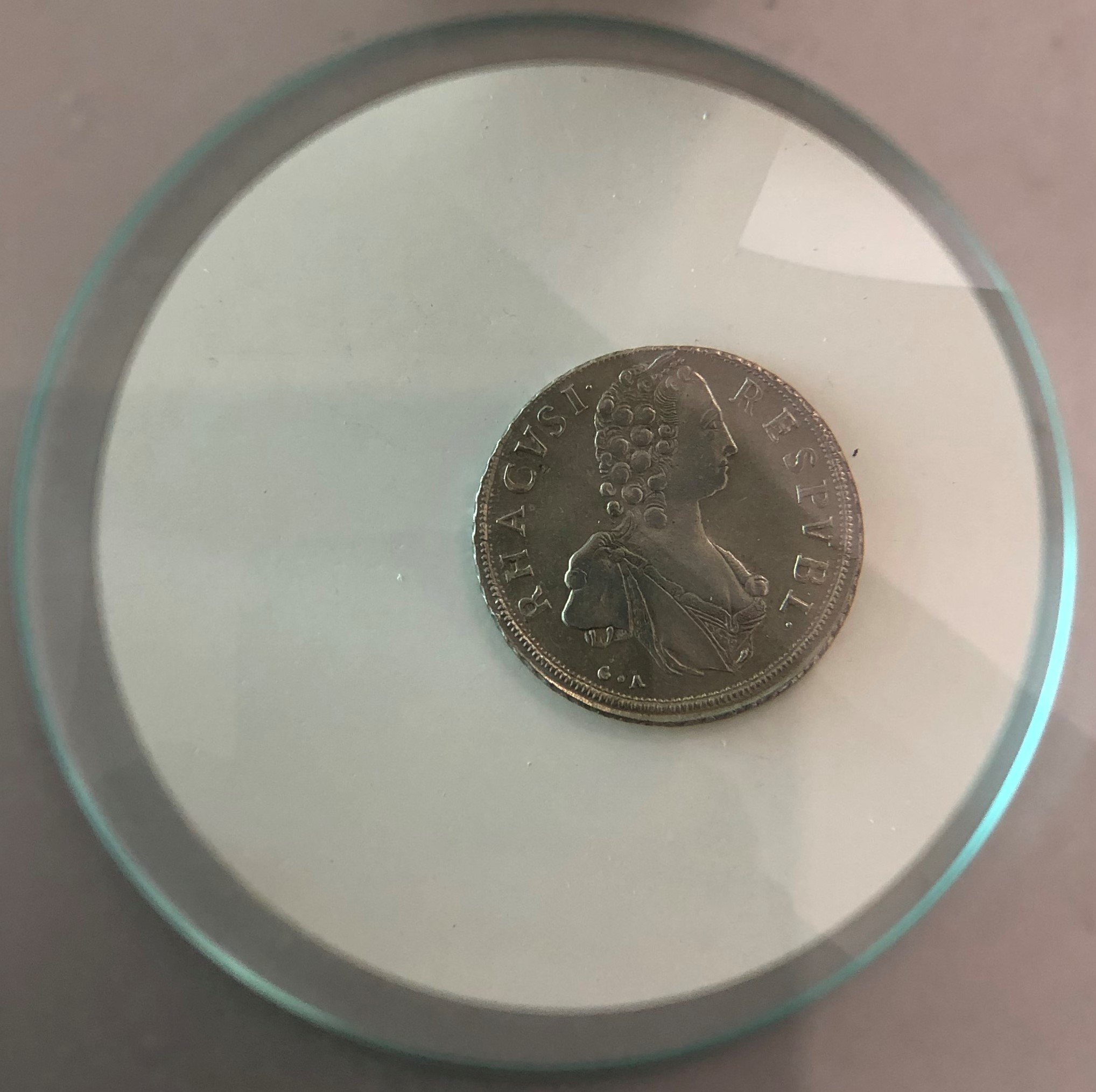
Unfortunately, the Roland Column was under renovation during my visit, so I didn’t get to see the column itself.
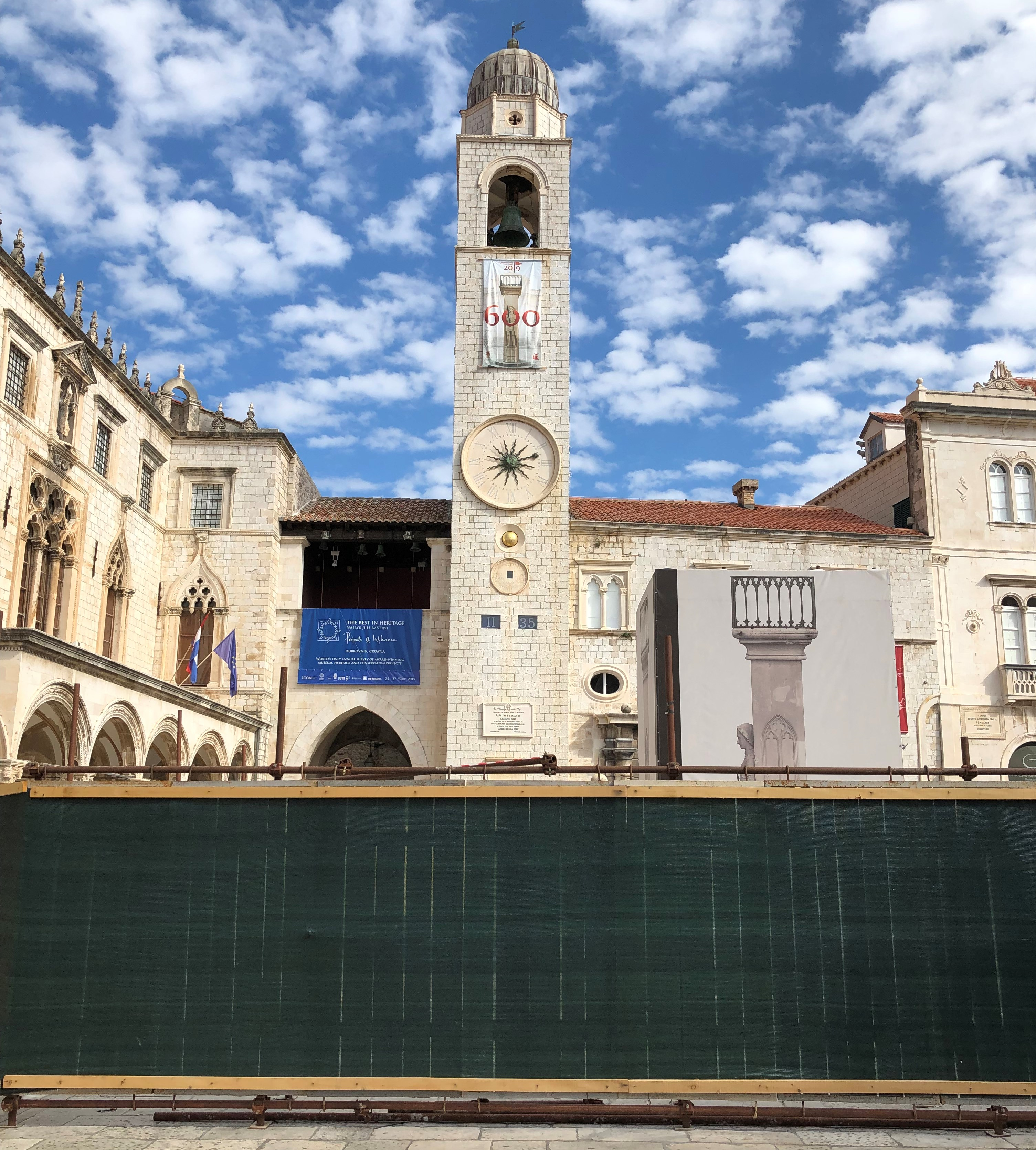
Later in the evening, I joined the sunset kayaking tour and witnessed another spectacular sunset. I highly recommend doing the kayaking tour. It is a great way to experience the waters around Dubrovnik at a leisurely pace, go snorkeling in the caves and get some great exercise!
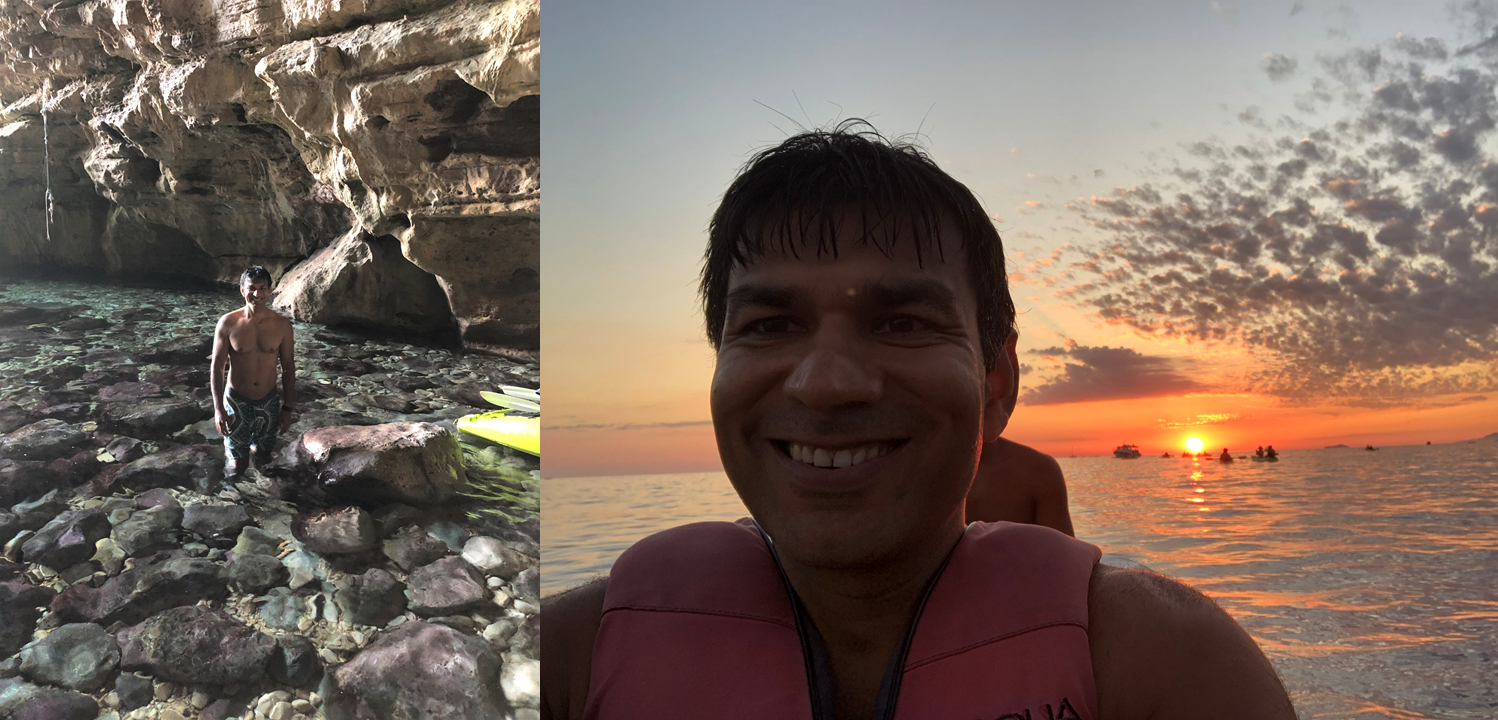
Interestingly, everyone on my kayaking tour other than the guides and me were Chinese. This was also true for many of the tourists I saw in Dubrovnik. With millions entering the middle class every year in China, tourist destinations such as Dubrovnik are set for many decades to come! The kayaking guide (who was my partner on my two-person kayak since I was the only one by myself in the group) told me that there is talk of introducing legislation to limit the number of cruise ships to 2 or 3 per day to limit stress on the local infrastructure and disruption to the local community.
Mostar and Kravice Waterfalls (Sep 30th)
The next day (Sep 30th), I joined the bus tour to Kravice waterfalls and Mostar in Bosnia. There was an older Irish couple and a few people from Brazil on the bus. We saw some gorgeous views of the Dalmatian coastline and the numerous islands along the coast on our way.
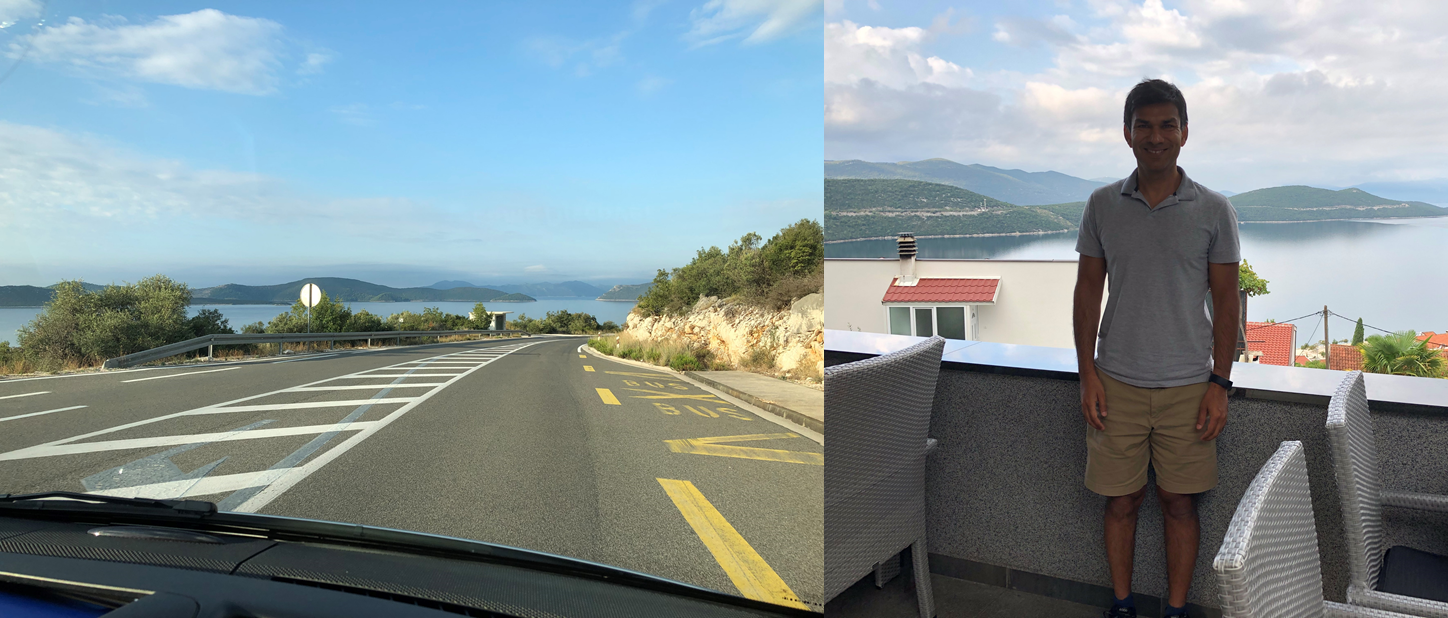
Interestingly, Croatia is split into two by a small strip of the coast around the town of Neum, which is part of Bosnia and Herzegovina. Thus, while traveling north from Dubrovnik to Mostar, one must pass through three border controls – the first while leaving Croatia and entering Bosnia, second when leaving Bosnia and entering Croatia, and the third when entering Bosnia again. This is why you must bring your passport for the Mostar tour and end up with a page full of entry/exit stamps. These border stops are quite inconvenient and time consuming. A bridge is being built by a Chinese company (which outbid European competitors in both cost and time to completion) which will connect the two parts of Croatia and eliminate these border checks.
We stopped by Kravice waterfalls on the way to Mostar. The falls are nice but aren’t going to blow your mind. Some of the Brazilian people on the tour and I rented a small paddle boat and paddled around the front of the falls to get some close up views.
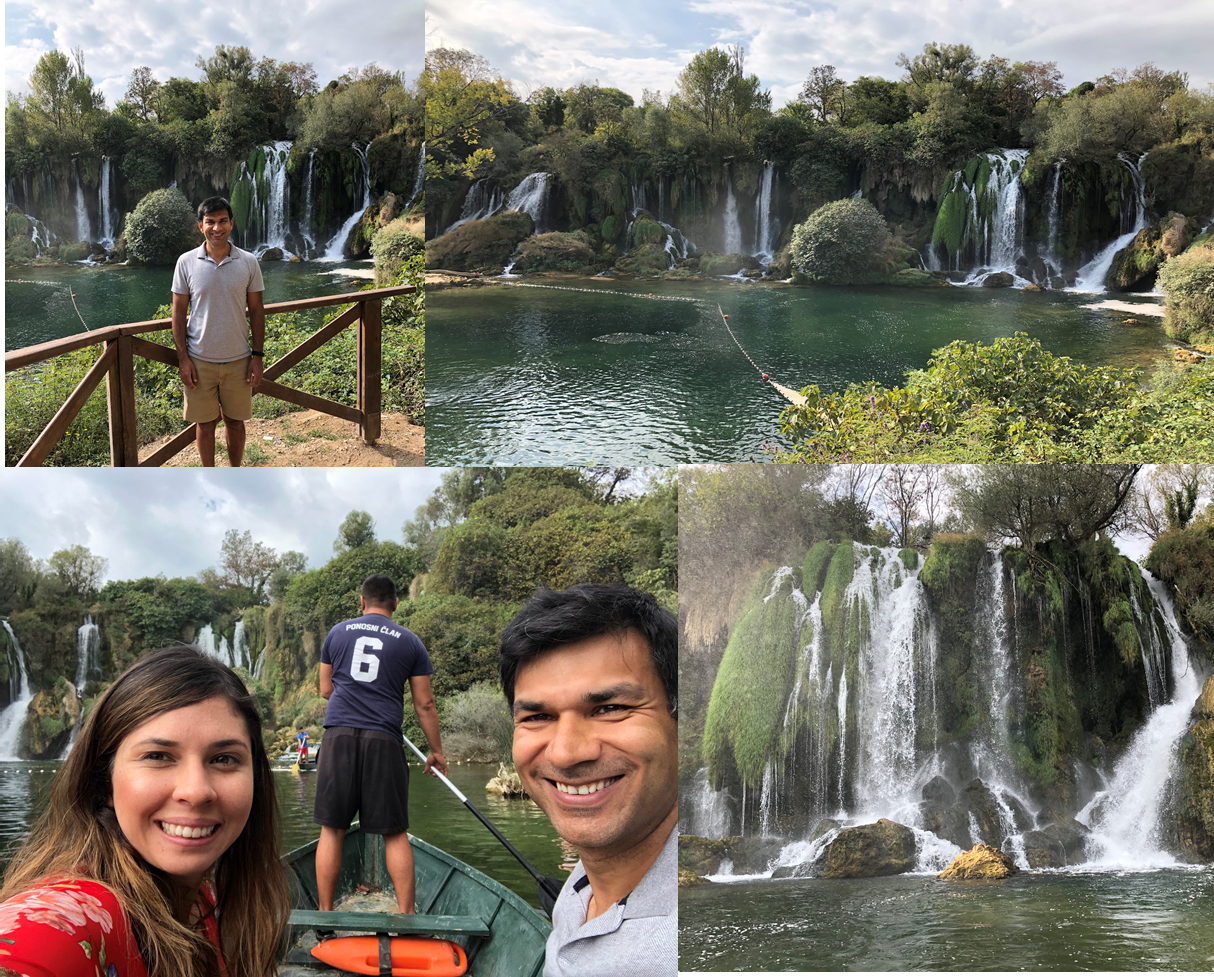
Next up was Mostar. The town of Mostar is the unofficial capital of Herzegovina and best known for “Stari Most” (literally ‘Old Bridge’), also known as Mostar Bridge, first built in the 16th-century by the Ottoman empire under Suleiman the magnificent. The bridge spans the Neretva river that runs through Mostar. The bridge was destroyed in Nov 1993 during the Croatian-Bosnian war as a result of shelling by Croatian forces. Thanks to funding from the World Bank, UNESCO and other organizations, the bridge was reconstructed and reopened in July 2004.
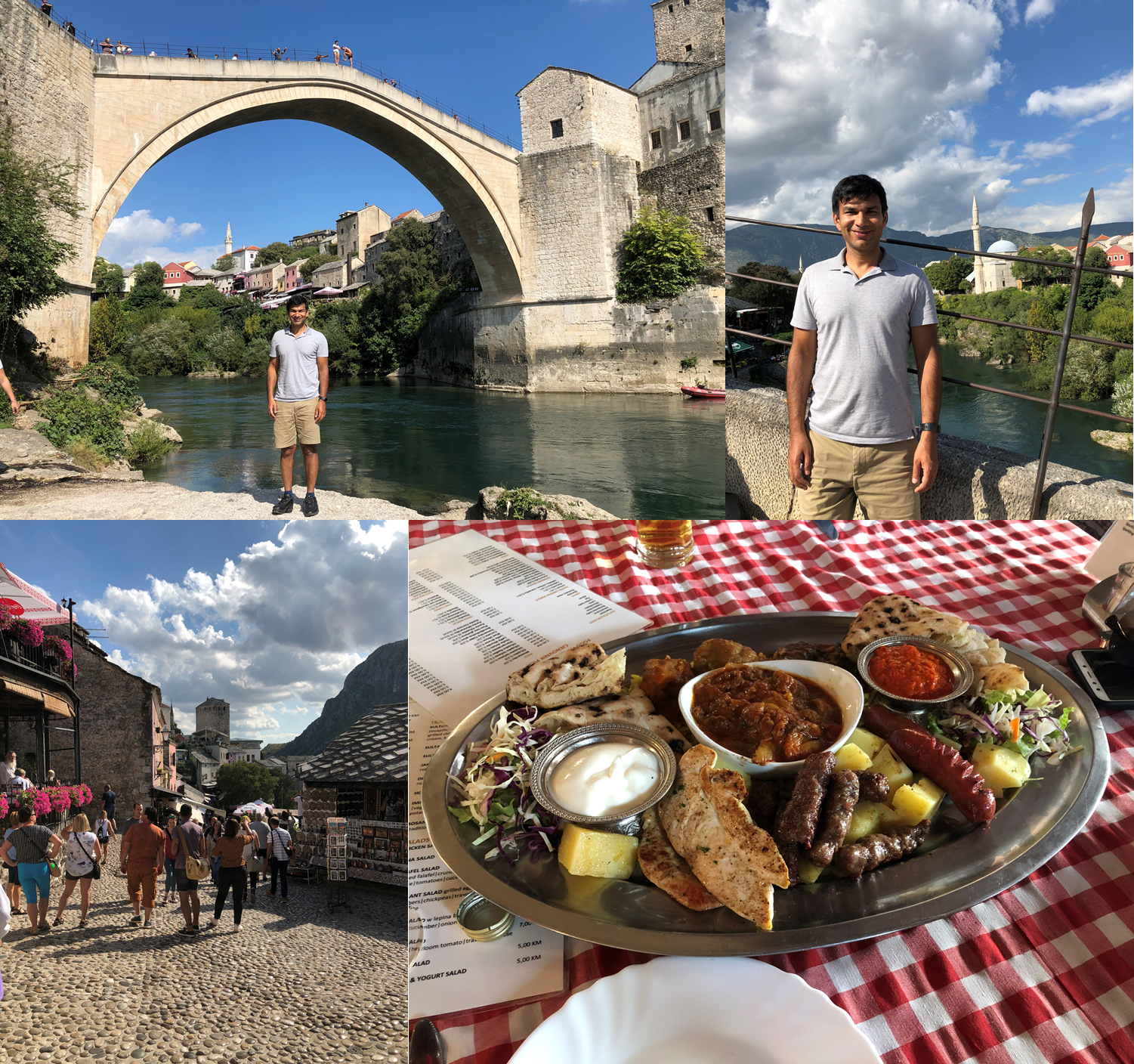
According to our tour guide, the town of Mostar is (unofficially) split between Croatian and Bosnian parts with ethnic tensions still continuing. I noticed that on crossing the street that divides the city into the Bosnian part, the infrastructure became noticeably poorer. The architecture in Mostar is a mix of Ottoman, Austrian and communist style buildings, reflecting the long, twisted history of the area. Bosnia was part of the Ottoman empire for hundreds of years until it was annexed by the Austro-Hungarian empire after the treaty of Berlin in 1885 and finally became part of Yugoslavia after the collapse of Austria-Hungary after WW1. Many buildings still bear scars of the Balkan wars after the dissolution of Yugoslavia in 1991.
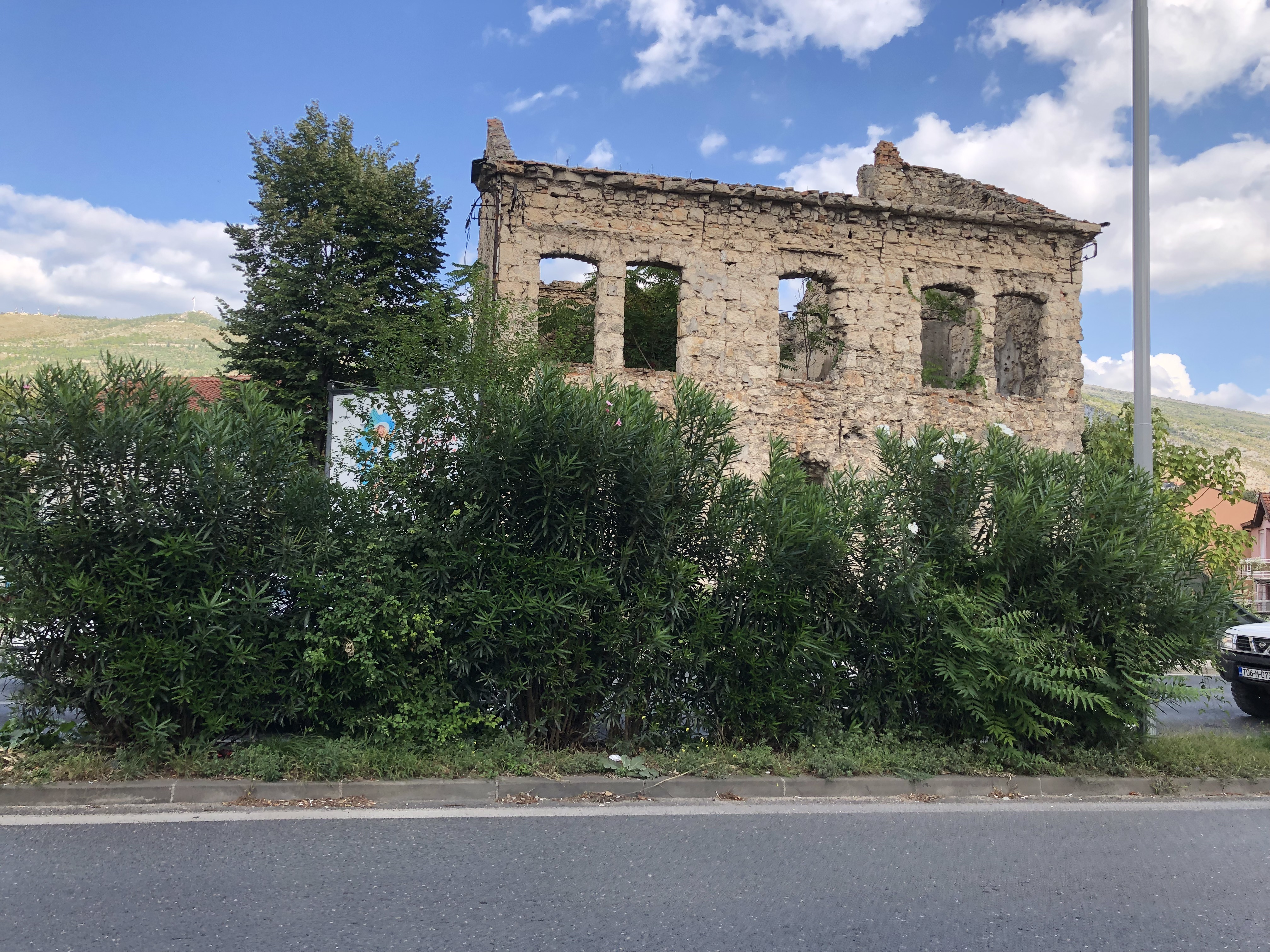
Somewhat to my surprise, our tour guide had fond memories of life under communist rule under Tito. According to him, the area was prosperous relative to other communist countries and citizens of Yugoslavia could freely travel to both western and Soviet block countries. He also had a high opinion of the sturdiness of the buildings constructed during Austro-Hungarian rule, many of which survived the Balkan wars in better condition than communist era buildings despite being much older.
After our tour, we walked around the area around the bridge and then got a nice big lunch, which was delicious, healthy and cheap – a rare combination (scroll up for a photo :-)).
My plan for the next two days was to take a bus to Split, a Croatian city 4 hour bus ride from Dubrovnik, rent a car and drive to Zagreb, the capital of Croatia and check out some of the many national parks along the way. I’d spend the night in Zagreb and take the train from Zagreb to Vienna the next day. I had heard that one gets to experience some lovely views of the Alps along the Semmering route from Zagreb to Vienna.
However, I made friends with some of the Brazilian people on the trip and decided to go with them to Montenegro and visit the medieval city of Kotor, about a 2 hour car ride from Dubrovnik. I also booked a late afternoon flight to Vienna from Dubrovnik for the following day. This meant that we only had a few hours in the morning and early afternoon to go to Kotor. So, after we got back to Dubrovnik around 7PM, we rented a car (very easy and cheap to do – ~$60 per day). We got dinner at restaurant Panorama located on a hill top behind Dubrovnik offering some gorgeous views of the city below and set out for Kotor early morning the next day (Oct 1).
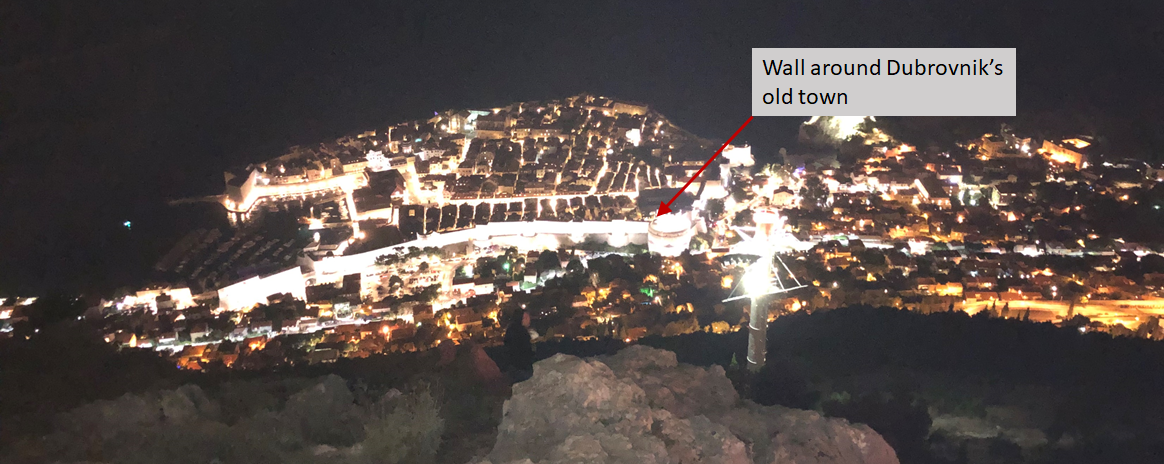
Kotor – Montenegro (Oct 1)
The Mediterranean town of Kotor is located on the bay of Kotor, one of the most indented part of the Adriatic sea and surrounded by fortifications built during the Venetian period. The drive from Dubrovnik to Kotor takes about 2 hours and offers breathtaking views of the Kotor bay. Unfortunately, since Kotor is located in Montenegro, you have to go through border control and must bring your passport.
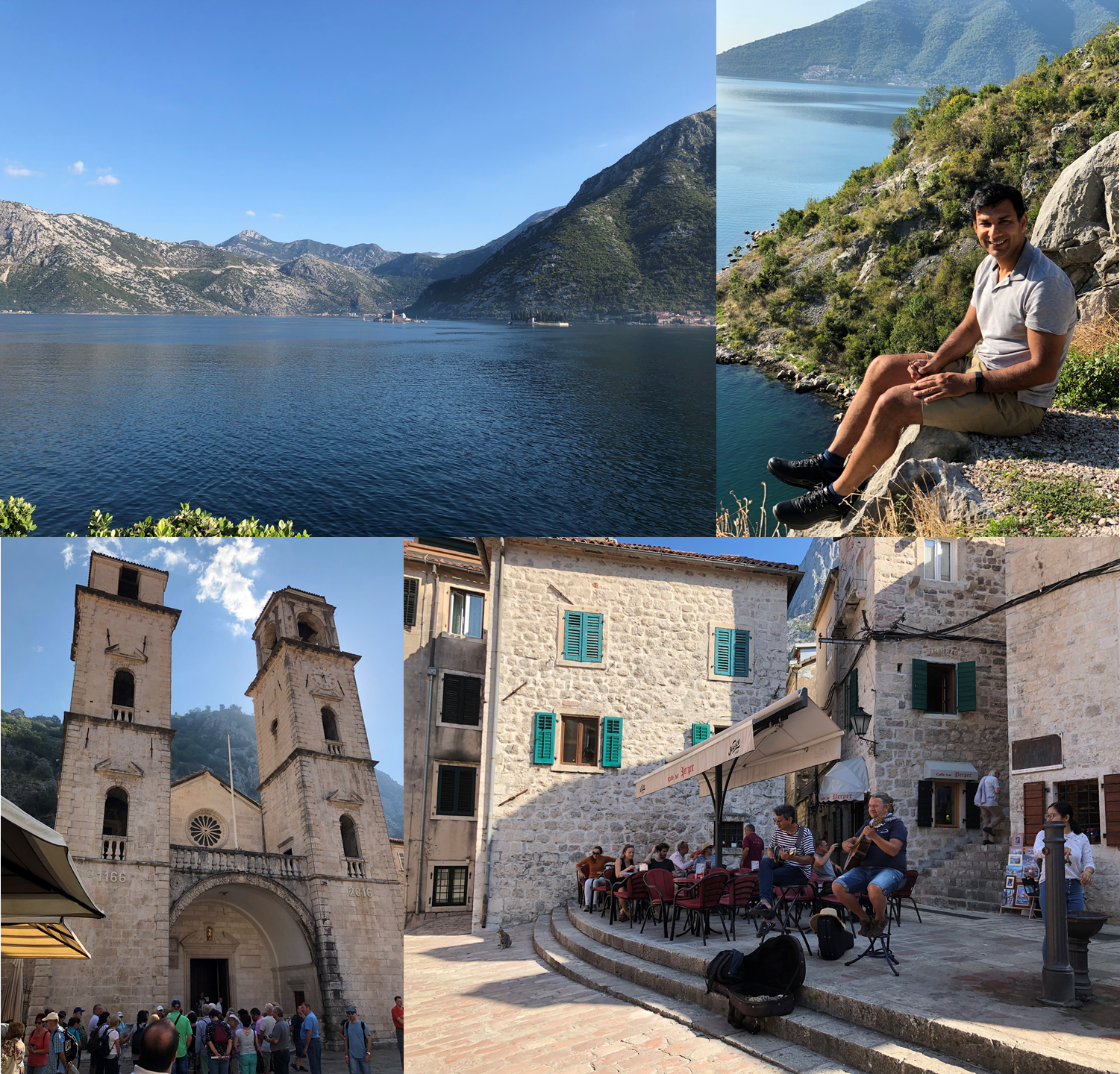
We arrived in Kotor around 9AM. Kotor is a popular cruise ship stop and there is a big parking lot next to where the cruise ships dock so finding parking was easy. From the parking lot, the entrance to old town is a 5 minute walk. Old town in Kotor is a bit more “old looking” and less commercial than the one in Dubrovnik which is teeming with restaurants. Behind the old town, there are ancient Venetian era fortifications. Walking on the fortification walls requires buying a ticket (~8 Euros) and takes around 2 hours. Since I only had a couple of hours in Kotor before driving back to Dubrovnik so I could catch my flight, I wasn’t able to do the walk. The fortifications extend along the hill behind the old town and should offer some nice views of the old town and the Kotor bay, so this is a very good reason for me to go back!
I would have liked to spend more time in Kotor, so the drive back to Dubrovnik was a bit sad but otherwise uneventful. Since I had rented the car from a local car rental agency rather than a big company such as Hertz, I simply called the agency 30 minute before my projected arrival time at the airport. The agency sent a guy to meet me at the airport and take delivery of the car. Because the traffic around Dubrovnik is light and the roads are good, travel time can be estimated quite reliably.
Vienna: Oct 1-3
I arrived in Vienna late afternoon and took the train from the airport to the main train station, a 15 min walk from my Airbnb. I found the directions to the train terminal at the airport a bit confusing. Figuring out which train to take also wasn’t straightforward because most of the instructions were in German.
After checking in to my airbnb and resting for a bit, I met my friend Daniela who used to live in Washington and recently moved back to Austria. She showed me around the old town, the area inside the Ringstrasse (ring road), a 3.2 mile loop around old town that traces the path of the medieval wall that once protected Vienna. Many of Vienna’s most important buildings such as the Hofburg palace, Vienna opera house and St. Stephen’s cathedral are inside this loop. There are multiple ways to explore the area – on foot, taking hop on-off tours, trams etc. To my surprise and unlike most other major European cities such as Budapest, Prague and Paris, the important sites are not located along the river Danube.
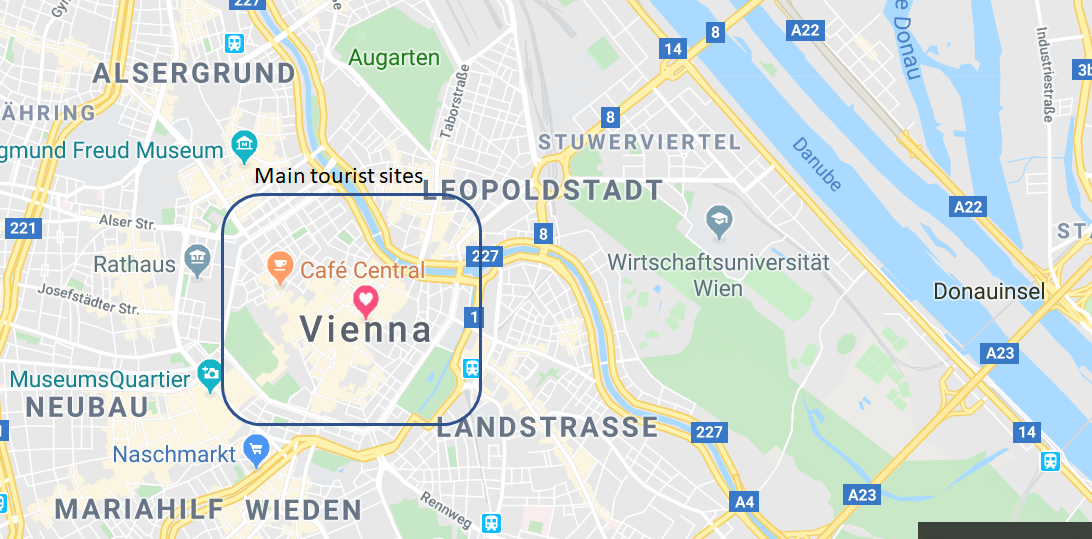
Vienna was the capital of the Habsburg empire, widely considered a failure because for most of their history they were on the back foot, defending territory from their aggressive neighbors France, Russia, Prussia and the Ottomans. However, if judged from their time in power (392 years), the Habsburg were the most successful European empires, outlasting the Russian Romanovs and the French Bourbons. They kept the Turks from taking over Europe, played a key role in maintaining the fragile balance of power in Europe and managed a large, multi-cultural empire consisting of many ethnic groups – Germans, Hungarians, Bohemians (modern day Czech and Slovaks), Poles, Slavs etc.
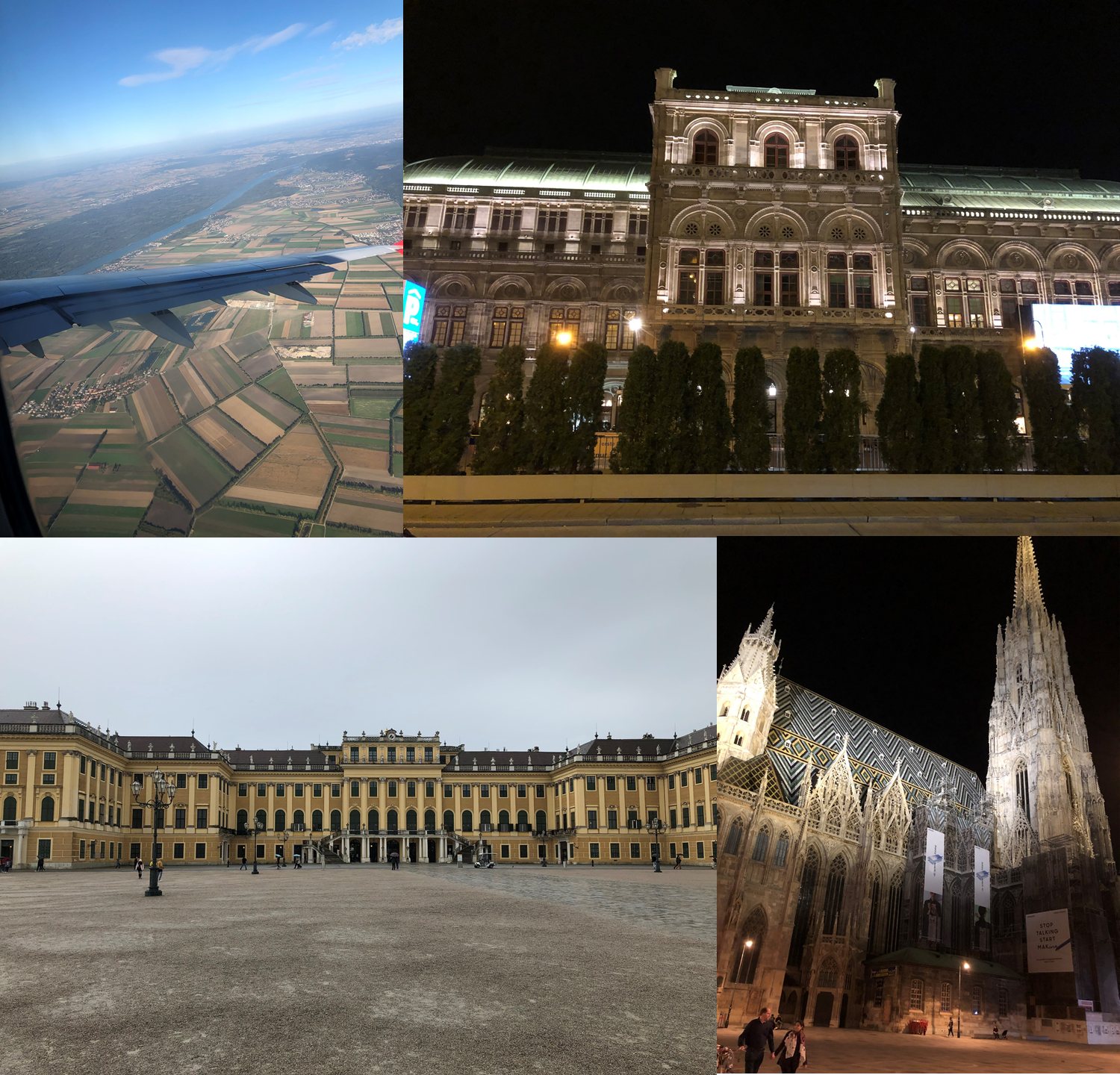
I only had one full day in Vienna. Being a huge history nerd and having read a bit about the Habsburgs, I wanted to see the two main Habsburg palaces, Schönbrunn and Hofburg. The Schonbrunn palace is located ~ 20 minute train ride from old town while the Hofburg is located in old town. While purchasing tickets, ask if there is a package deal that lets you visit both palaces – you may save 5-10 Euros.
It was raining the whole day on Oct 2 and I didn’t have an umbrella so walking around was a bit inconvenient. On the positive side, the rain also likely lowered the number of tourists. Still, I had to wait more than an hour to enter Schönbrunn after purchasing the ticket. There are multiple self-guided audio tours available. I chose the grand tour that included an additional 18 rooms from the time of Maria Theresa, one of the most successful Habsburg empress.
There are many outstanding works of art in the palace, but the one that made the strongest impression on me (call me weird) is the “Entry of the Bride” painting depicting the long line of chariots carrying various European royalty to attend the wedding of Joseph the second, eldest son of Maria Theresa with Isabella of Parma. Can you imagine being stuck on a chariot or even worse, being a part of the royal retinue around the chariots.. We are so fortunate to be living in the 21st century!
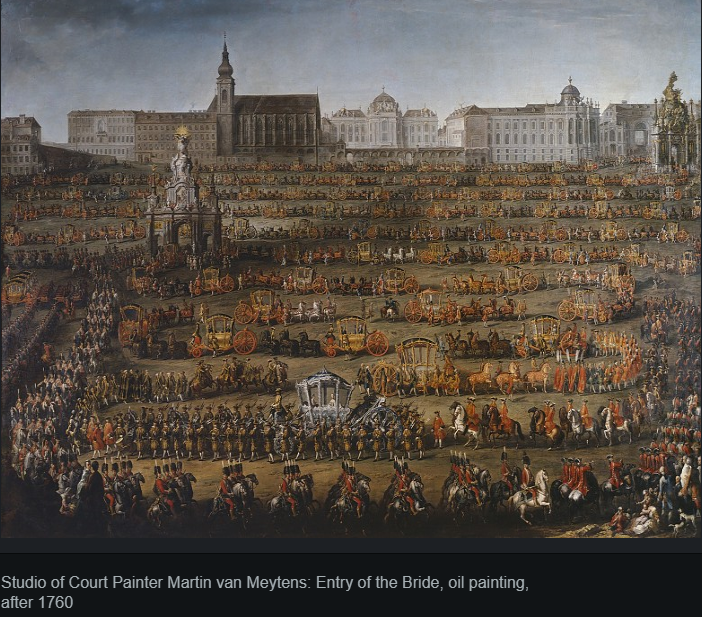
The tour of the Schönbrunn palace took me about 2 hours. The palace also features world renowned gardens which I didn’t visit because of the rain. After the palace tour, I metroed back to the old town area and had lunch at cafe Schwarzenberg, one of the oldest coffee houses in Vienna. I enjoyed the experience and highly recommend getting a coffee there.
After coffee, I visited the Hofburg palace, the main residence of the Habsburg emperors. The palace was also running an exhibition about “Sisi” (nickname for Elisabeth, the wife of Franz Joseph – the second to last and longest serving emperor of Austria) who led a colorful life and has become a cultural icon in Austria. The Hofburg palace tour starts with a tour of the silver and other kitchenware collection of the Habsburgs, the opulence of which is breathtaking. The rest of the tour visits the personal and official living spaces of the various Habsburg emperors, with particular focus on emperor Franz Joseph who served from 1830 to 1916.
I was a bit surprised by the disproportionate attention on Franz Joseph and his wife Sisi. Franz Joseph presided over the general decline of the Habsburg empire. This includes the defeat of Austria by Prussia in 1866 during the Austro-Prussian war, which led to German unification, the prevention of which was a longstanding Habsburg foreign policy objective; the Hungarian revolution of 1848 which needed Russian military assistance to be suppressed and led to the establishment of the dual monarchy of Austria-Hungary and finally the dissolution of the Habsburg empire after WW1. In contrast, empress Maria Theresa who ruled during the second half of the 18th century (the heyday of the Habsburg empire), bore 16 children (10 of whom survived into adulthood), held off Fredrick the second of newly ascendant Prussia and instituted significant domestic and military reforms; gets significantly less attention. Austrian foreign minister Metternich who led the Austrian delegation at the Congress of Vienna that divided post-Napoleonic Europe among the victors and successfully prevented major wars in Europe through international diplomacy, scarcely gets a mention. The truly glorious don’t always get the glory!
After the palace tours, I met with Daniela at Cafe Central for dinner. Cafe Central is a beautiful restaurant with great food and drinks. I highly recommend it! After dinner we hung out with a friend of hers in one of the residential areas of Vienna and drank a lot. Wine is so cheap (~3 Euros for a glass) in Vienna!
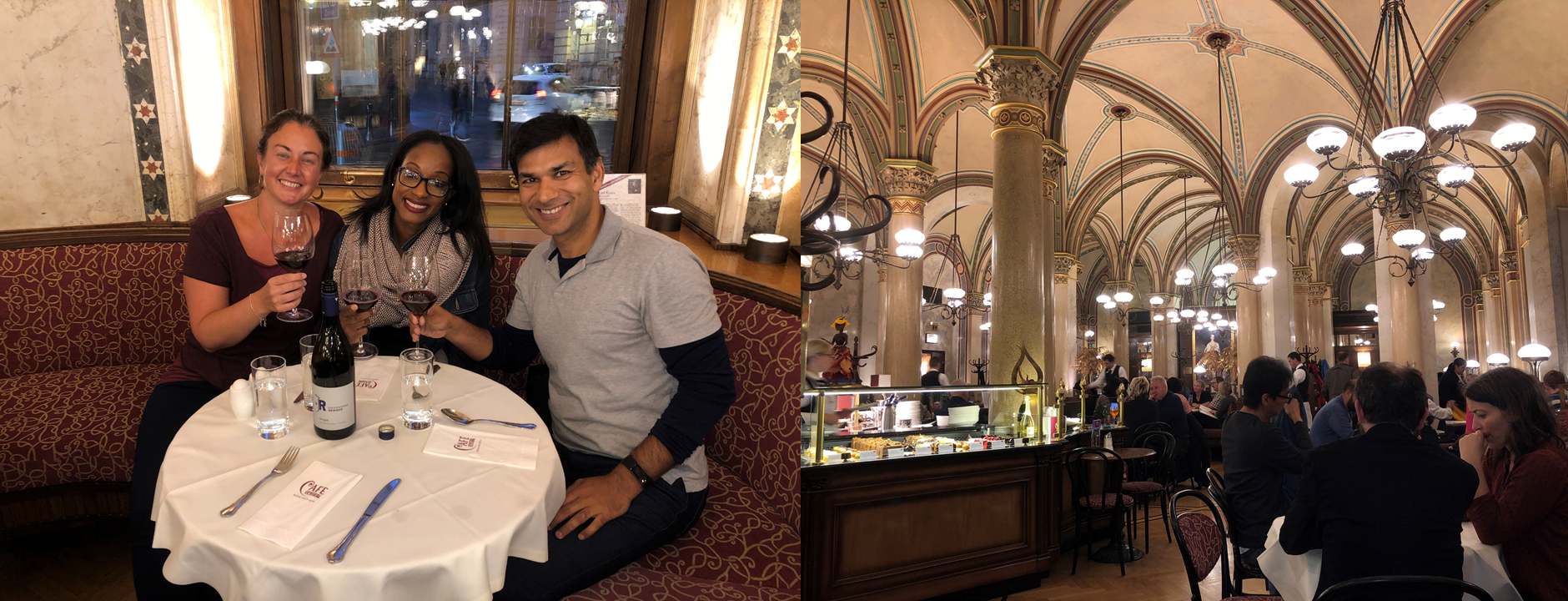
This concluded my trip to Vienna. I don’t think I could have done more in the one full day I had there. The next morning, I had a 6 am flight to Barcelona to catch. I was a bit unsure of the best way to get to the airport that early. Thankfully I was able to find an Uber for ~20 Euros.
Lloret de Mar, Spain: Oct 3-6
I traveled to Spain to attend a Kizomba festival recommended by my Finnish friends in the coastal town of Lloret de Mar, about 75 Km north-east of Barcelona. There are buses from the Barcelona airport to Iloret de Mar, however since my flight back to Helsinki on Oct 6 left at 8AM and Lloret del Mar is a two-hour bus ride from Barcelona airport, I decided to rent a car instead. I was able to rent a little Fiat 500 from Goldcar for just $120 for 3 days, including full insurance.
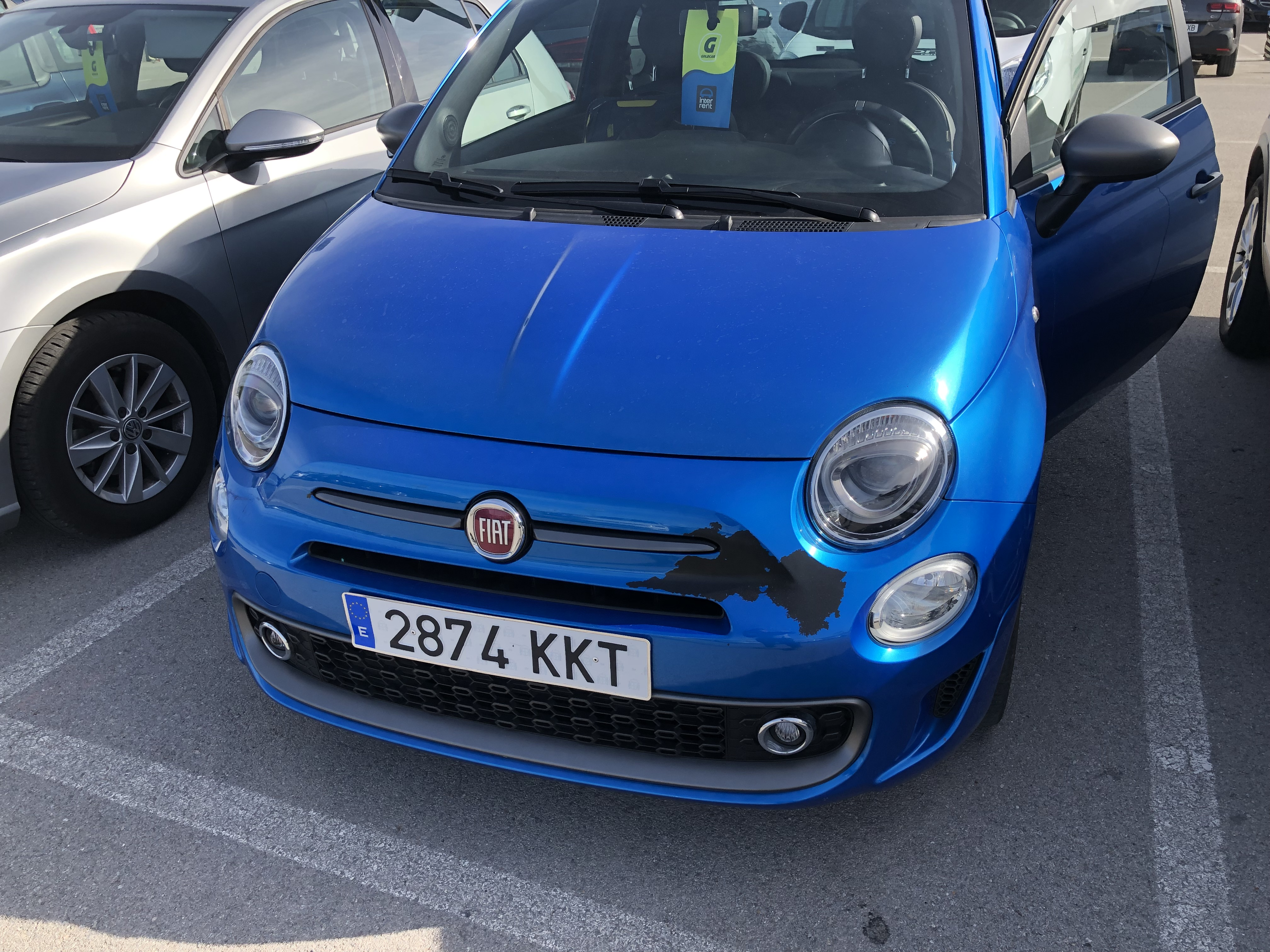
The highway from Barcelona to Lloret del Mar is a toll road with many tolls on the way. The instructions on how to pay toll are in Spanish. I was unsure which toll booth to stop at and how to pay the toll and was quite relieved when my credit card worked at the toll booth.
I stayed at the hotel Eugenia, a standard resort style hotel and also the venue for the Kizomba festival. I was super tired when I arrived at the hotel so I just took it easy and caught up on sleep. Later in the day, I drove to a charming Mediterranean town called Tossa de Mar best known for its medieval fort, walled-in old town and light house.
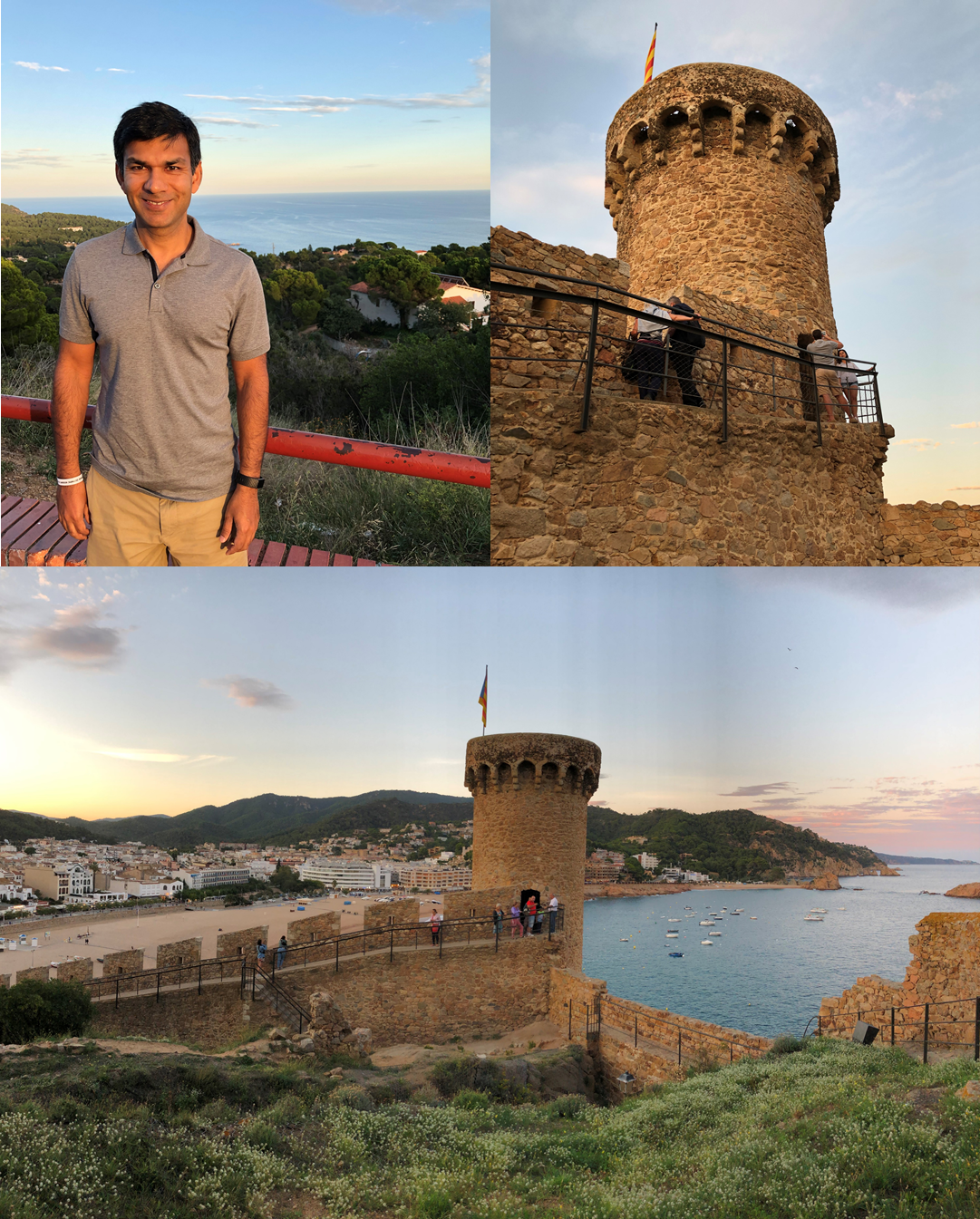
The rest of my stay in Lloret del Mar was mostly uneventful (except for when I got pulled over after making a left turn, see below). I relaxed, hung out with my Finnish friends and attended the Kizomba workshops and social dances. The workshops were mostly in Spanish and learning a dance from instructions that you can only observe and not understand was an interesting experience :-). There were people from all over Europe at the festival and I made some new friends.
One day as I was driving through the city, I made a left turn and immediately saw flashing lights behind me. I pulled over and was informed by the cop that making left turns was illegal. I’m not sure if that is a local, city-wide traffic rule or applies all over Spain. The cop asked me for my drivers license and car registration papers. I explained that I was visiting from the U.S. and handed over my VA driving license. After consulting with his partner, the cop told me that I needed an International Driving Permit (IDP) and a U.S. license is not sufficient. This was news to me because I had driven in Europe with a U.S. driving license many times before and never had issues. Anyhow, the cop let me go after making me pay a fine of 100 Euros (in cash, which was weird, but he gave me a receipt with his name on it, so I suppose that’s how they roll in Spain). According to this article, while a U.S. driving license is sufficient in most European countries, some require an IDP to rent and drive a car. The cop also mentioned that the rental car companies don’t enforce the IDP requirement because they don’t want to lose business, but if you get into an accident, you may have trouble using your insurance coverage if you don’t have an IDP. Something to look into next time I travel to Europe!
That was the end of my adventures in mainland Europe. I flew back to Helsinki (after almost missing my flight because I got lost on the way to the Barcelona airport) on Oct 6 to spend some more time with my family and then came back home on Oct 10.
I hope you enjoyed reading this article and got some useful tips! Please let me know by leaving a comment 🙂

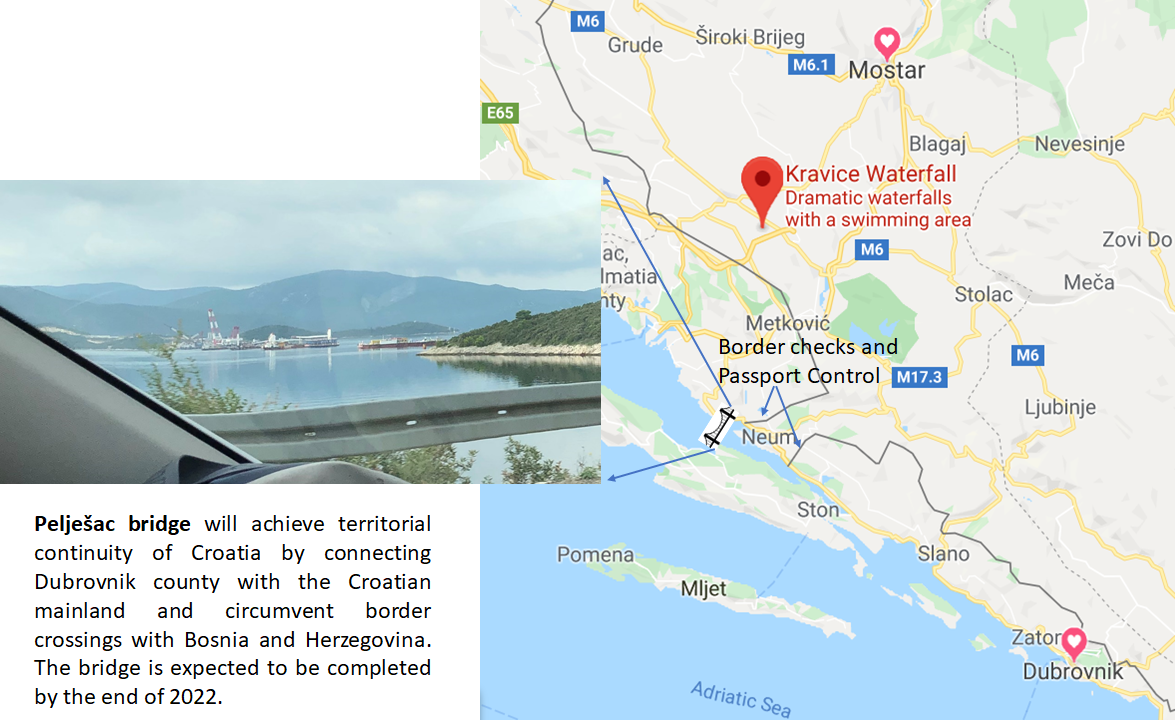
Leave a Reply